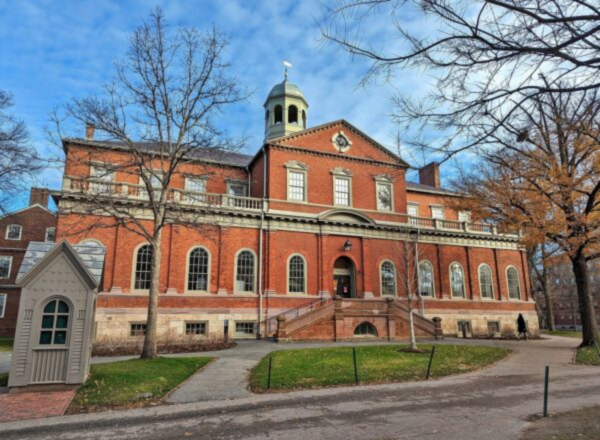Spotlight On: Doug Edgeton, President & CEO, North Carolina Biotechnology Center
 May 2024 —In an interview with Invest:, Doug Edgeton, president and CEO of North Carolina Biotechnology Center, proudly shared how it has surpassed its key goals set out in its 2025 plan. He highlighted strategies that the company has implemented to diversify its grants and revenue streams, and how employers seek individuals with skills tailored to working in biopharma manufacturing.
May 2024 —In an interview with Invest:, Doug Edgeton, president and CEO of North Carolina Biotechnology Center, proudly shared how it has surpassed its key goals set out in its 2025 plan. He highlighted strategies that the company has implemented to diversify its grants and revenue streams, and how employers seek individuals with skills tailored to working in biopharma manufacturing.
What do you consider the most significant contribution of your organization to the overall regional market and the life sciences sector in the past 12 months?
Our organization’s four-decade long commitment to North Carolina’s life sciences sector remains strong. Despite potential signs of a slowdown, the state has seen a remarkable influx of companies, creating nearly 12,000 jobs in the past four years. We prioritize workforce development and secured a $25M U.S. Economic Development Administration Build Back Better Regional Challenge Grant to increase awareness of, access to, and availability of life sciences manufacturing training across 79 of 100 North Carolina counties.
NCBiotech is managing the Community Engagement project that promotes awareness of training and job opportunities in life sciences manufacturing among rural, distressed regions with underserved populations. Our Accelerate NC/BBBRC grant is retraining workers for biomanufacturing roles and reaching out to high school students to provide pathways to careers in life sciences manufacturing. Collaborating with the community college system, the BioWork short course is now available at 12 community colleges. This ensures accessible training for entry-level positions, reinforcing that North Carolina will continue to have the workforce to remain a leading global life sciences hub.
What specific skills or profiles do you observe growing in demand, and how is your organization addressing the needs of this skilled workforce?
It’s not a one-size-fits-all scenario. Employers are seeking individuals with specific skills and knowledge tailored to the nuances of working in biopharma manufacturing. A key requirement is proficiency in current Good Manufacturing Practices (cGMP). Interestingly, there is a growing demand for individuals trained in facility maintenance, spurred by the impending retirement of those managing essential aspects like air conditioning and maintenance at biopharma manufacturing sites.
An exciting prospect arises for individuals transitioning from the military. North Carolina boasts a significant military presence, with approximately 21,600+ people completing their military careers in the state each year. Recognizing this opportunity, our organization has collaborated with the government to develop the Military Outreach and Veterans Engagement (MOVE) program. This initiative is tailored for exiting military personnel and their spouses, offering targeted training in their last six months of service. The unique skill set cultivated in the military, particularly the ability to adhere to standard protocols, aligns seamlessly with the requirements of the life sciences industry.
What overarching opportunities do you foresee for the North Carolina Biotechnology Center and how are you leveraging the strengths of the Triangle to capitalize on them?
In 2024, the landscape appears promising, with anticipated growth in large-scale biopharma manufacturing, encompassing both small and large molecules. The evolving field of cell gene therapy continues to be a significant opportunity on the horizon. Notably, the Research Triangle Park (RTP) stands as a robust hub, spanning 7,000 acres, while the broader Triangle region extends its coverage across 10 counties in the state. As such, our efforts extend beyond the Triangle, as we actively engage with regions across the state to cultivate opportunities. While NCBiotech’s headquarters is in RTP, we have regional offices in Asheville, Charlotte, Greenville, Wilmington, and Winston-Salem to continue to cultivate bio assets statewide.
How is your organization planning to diversify grants and revenue streams to support the entrepreneurial ecosystem, particularly in life sciences and biotechnology?
NCBiotech has introduced a Flash Grant, offering up to $27,500 grant to academic researchers with novel ideas. This initiative aims to support projects in their early stages, aiding in technological advances or securing federal grants. A key focus is extending opportunities beyond RTP, addressing the lack of training options at universities by incentivizing faculty to attract graduate students to their research labs. Notably, the impact of our grant program is substantially contributing to the state’s growth, with $73 of additional funding raised by recipients for every dollar invested.
In our loan program, we have adjusted loan caps to accommodate inflation and the challenges companies face in raising capital. Amid a slowdown in investment, NCBiotech stands as a reliable source of early-stage funding. Additionally, NCBiotech’s loan program demonstrates an impressive return on investment, with $140 returned to the state for every dollar invested, showcasing the lasting, positive effects on supported companies. Looking ahead, we anticipate these numbers to increase, underscoring the sustained impact of our programs.
What are the main pillars and objectives of the North Carolina Life Sciences 2025 plan, and are there any anticipated shifts in this vision or mission?
Initially, the goal was to create 25 licenses from the grants made, but we have already far surpassed this target, with 79 license deals. Additionally, the plan aimed to create 140 patents through grant initiatives, but with 437 patents that number has been exceeded significantly. Our focus on job creation was substantial, with the target of 10,000 new jobs through the expansion and recruitment of companies. Impressively, we have surpassed this goal, currently at nearly 12,000 new jobs. Moreover, the plan anticipated attracting $4 billion in venture capital investment into the state over a five-year period. As of the end of 2023, we have already seen approximately $3.7 billion invested. And there’s still time to reach or exceed that goal.
How do you envision the NC Biotechnology Center addressing the industry’s overarching challenges?
Workforce training consistently ranks as a top concern, and while NCBiotech does not directly conduct training, it excels at coordinating these efforts. NCBiotech initiated the development of a biomanufacturing training curriculum, which was subsequently provided to community colleges, leveraging their faculty and labs for practical training. Our organization functions as a neutral, third-party convenor, bringing together stakeholders from high schools, community colleges and universities, government, and industry. This collaborative approach ensures a comprehensive understanding of industry needs and facilitates effective training initiatives. North Carolina has an extensive workforce development infrastructure with 58 community colleges, North Carolina State University’s Biomanufacturing Training and Education Center and North Carolina Central University’s Biomanufacturing Research Institute and Technology Enterprise, to name a few.
Another significant challenge is the rapid pace of technological change. NCBiotech aims to coordinate the state’s efforts to stay at the forefront of technological advances. Notable industry partnerships with tech giants such as Apple, Red Hat, IBM, SAS, and Lenovo, along with the strength of North Carolina’s universities in data analytics and data science position the state as a leader in integrating technology in the life sciences sector. In addressing the accelerating pace of change, NCBiotech emphasizes the importance of adopting technology swiftly. Leveraging artificial intelligence (AI) capabilities and partnerships, especially in areas like regenerative medicine and organ-on-a-chip technology, enables the state to respond rapidly to emerging challenges, such as future pandemics.
How have technological advancements impacted the life science industry?
One of the most promising developments shaping the future of drug discovery is AI. The potential impact is significant, particularly in accelerating the entire drug development process. By harnessing large volumes of data from diverse platforms, AI can be used to design new molecules and predict the efficacy of potential drug candidates. This breakthrough can expedite the journey from initial discovery to preclinical testing, phase one trials, and ultimately, bring new therapeutics to market at a much faster pace. In this context, the abundance of molecule libraries becomes a valuable resource.
What differentiates North Carolina as a life sciences hub?
North Carolina boasts a friendly business climate. It has been recognized by CNBC as the Best Business Climate in both 2022 and 2023. This positive business environment positions North Carolina, particularly Raleigh-Durham, as an attractive and supportive location for companies to innovate and thrive. The other key differentiator is collaboration. Our life sciences community, including industry, government, universities, community colleges, and other economic development partners, collaborates to solve challenges. Our Accelerate NC/BBBRC grant is an excellent example.
What is your outlook for NCBiotech and the life sciences sector in the next two to three years, and how does this inform your priorities?
There’s an emerging focus on the bioeconomy, a shift towards naturally derived medicines, and improved nutritional solutions. Globally, there is a pressing food supply and nutritional problem. The challenge lies in food distribution and with limited growing space that is shrinking as the population doubles in the next 25 years. Addressing this issue requires channeling the best and brightest minds and technologies such as AI to enhance crop yield and nutritional value while ensuring a sustainable, nourishing food supply. The rising prevalence of Alzheimer’s disease is another significant concern. Projections indicate that by 2050, around half of individuals over 65 may experience some form of dementia, particularly Alzheimer’s. The associated costs could surpass everything but the U.S. defense budget. Both of these examples highlight the urgency for innovative solutions.
Another critical issue is antimicrobial resistance, where bacteria evolve and resist existing antibiotics. This poses a global threat, with the potential for superbugs that are challenging to treat. North Carolina is actively involved in addressing this problem, with companies contributing to research and solutions in the antimicrobial resistance space. All these challenges underscore the importance of supporting research and resources in the state. While the NCBiotech does not conduct research directly, it plays a vital role in connecting businesses with the resources they need to tackle these global challenges, making our work at NCBiotech impactful and interesting.
How does the North Carolina Biotechnology Center play a crucial role in addressing the challenges within the life sciences sector?
North Carolina Life Sciences holds the potential to provide solutions to numerous worldwide challenges. The key lies in securing funding and cultivating the right ecosystem to bring solutions to fruition. As NCBiotech approaches its 40th anniversary in 2024, we reflect on its pioneering role as the first organization of its kind globally, established by a state government to exclusively focus on growing the life sciences industry. Since 1984, the economic impact of this sector in North Carolina has reached $88.3 billion, a testament to the significant growth from the initial five life sciences companies in 1984 to the current 810 companies in the state. The continued commitment to innovation and growth positions North Carolina as a leading life sciences hub.
For more information, visit:













